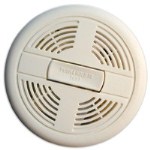PORTLAND, Ore. (KOIN) — Testing done by officials on Portland soil after high levels of cadmium and arsenic were found in the air show a low risk for residents, officials announced Wednesday.
The Oregon Health Authority, the Department of Environment Quality and the Multnomah County Health Department held a media briefing at 11 a.m. to give an update on the issue.
The officials said that an analysis of soil samples, cancer rates and urine tests show that residents in SE and North Portland, areas where testing showed high levels of toxics, are at low risk for health problems.
Samples of soil from around Bullseye Glass Co. in SE Portland were generally below naturally occurring or “background” levels of heavy metals, including arsenic, cadmium and chromium 6, the DEQ said.
As well as the soil showing low levels of metals, lab tests show few cases of cadmium exposure. In a study done, there weren’t elevated rates of metals-related cancers in North Portland.
During testing, the OHA analyzed 247 urine cadmium test results and found that seven samples had detectable levels of cadmium. Two were in children and three of them were at levels requiring clinical follow-up.
“The data released today are very reassuring, but our work is not done,” said Lynne Saxton, OHA Director. “We will continue to gather and report data going forward.”



